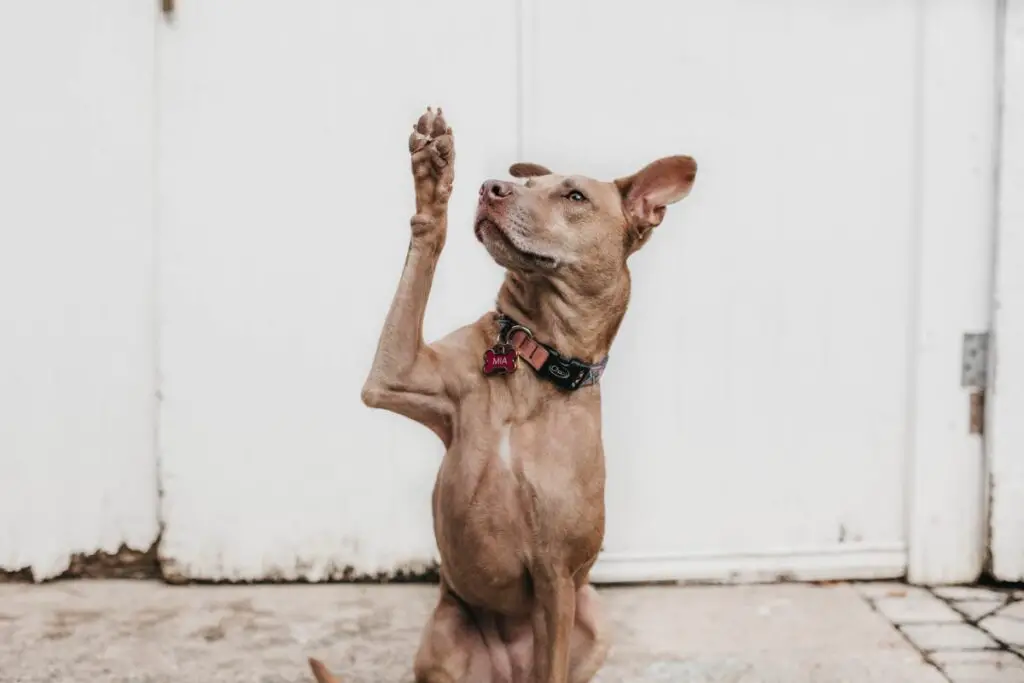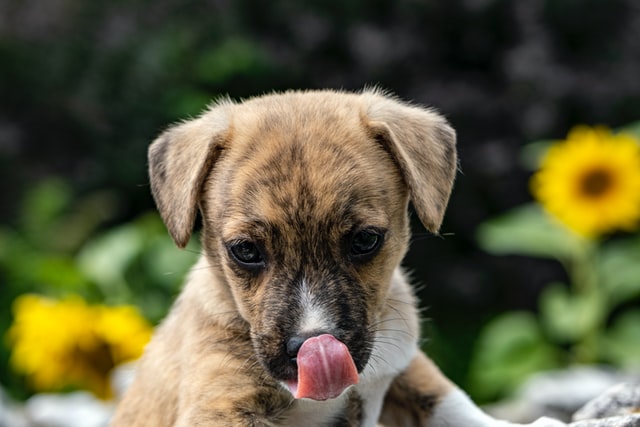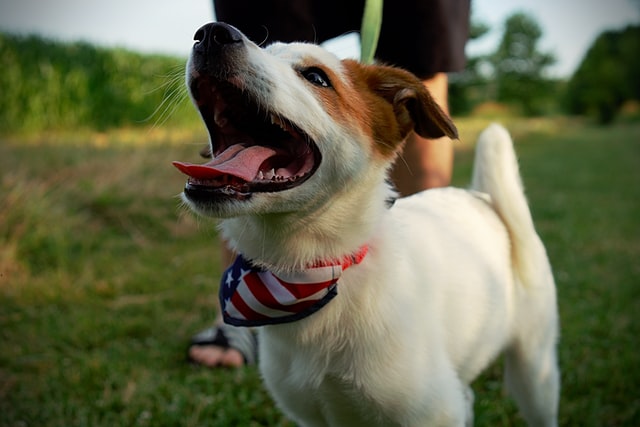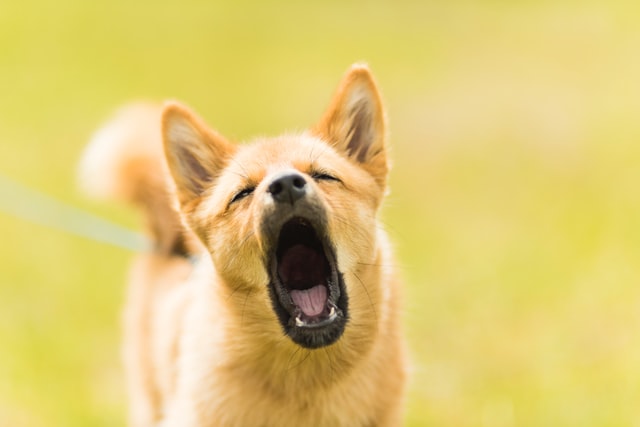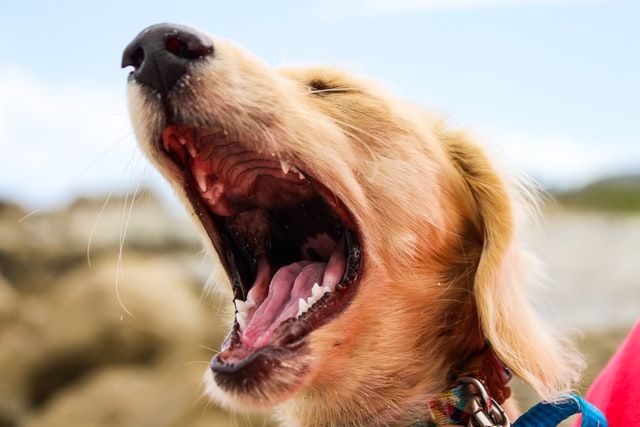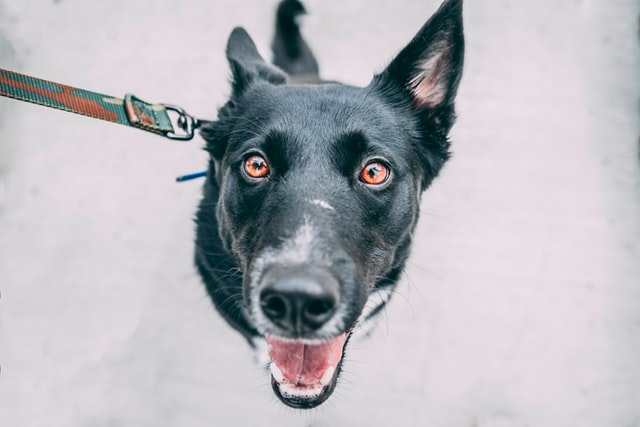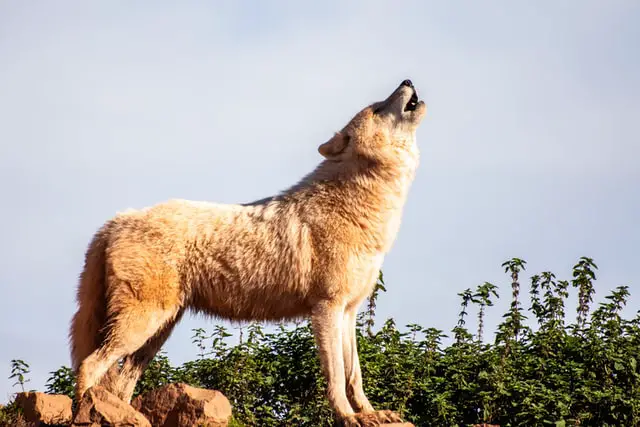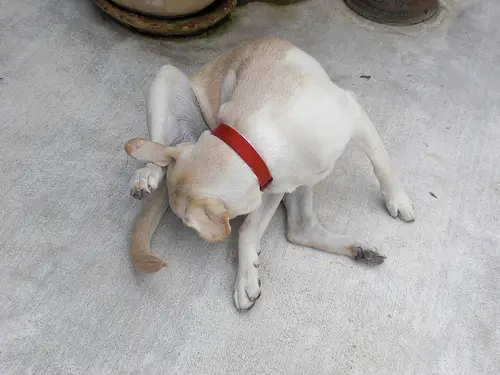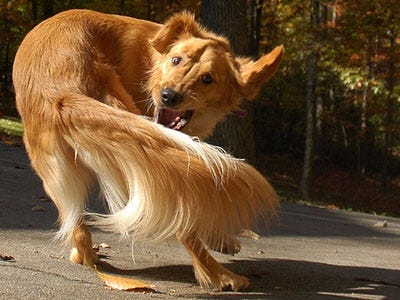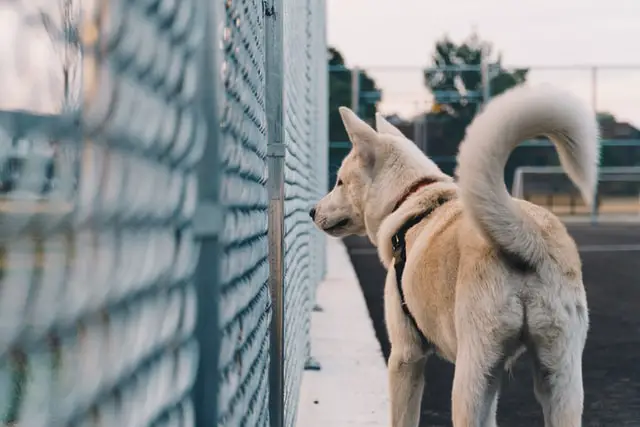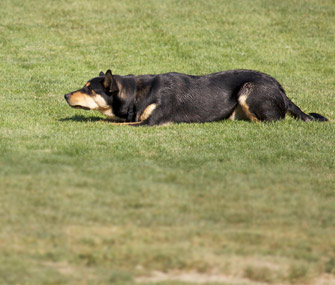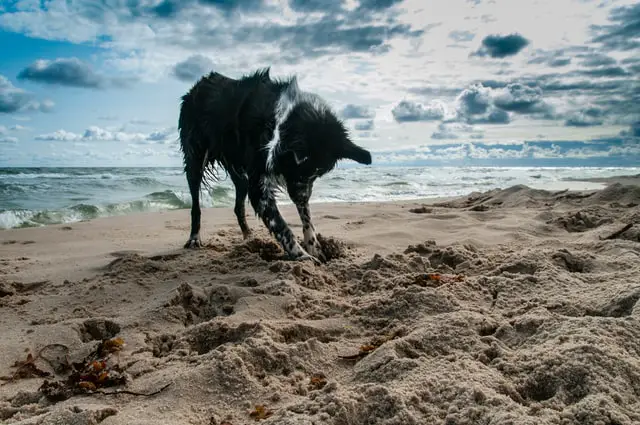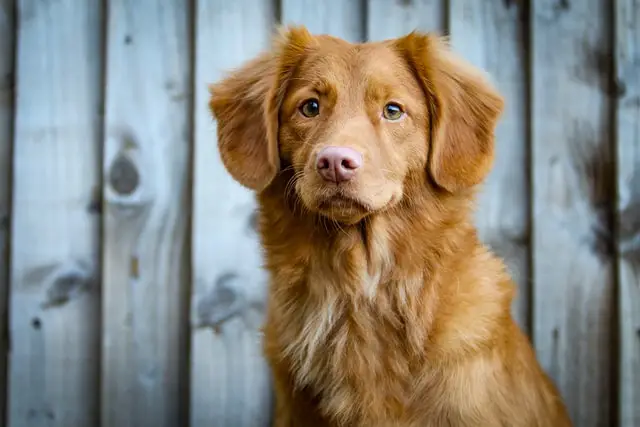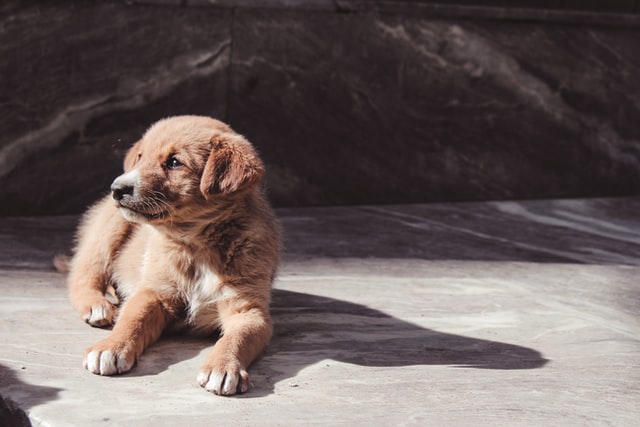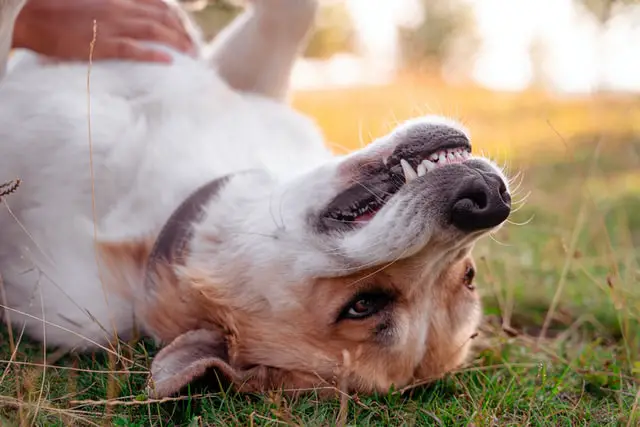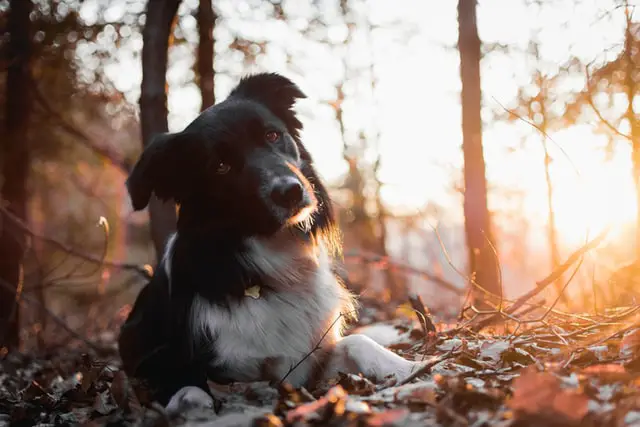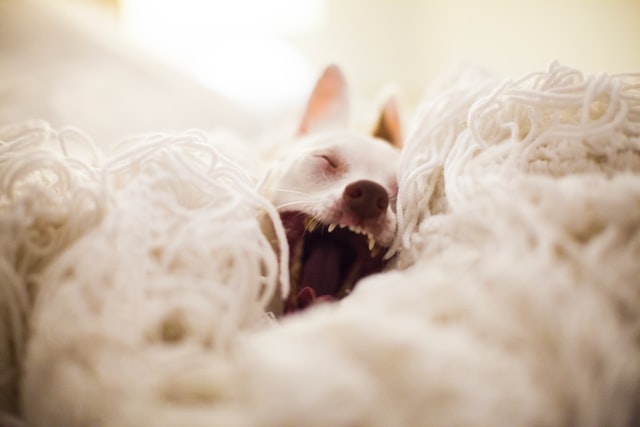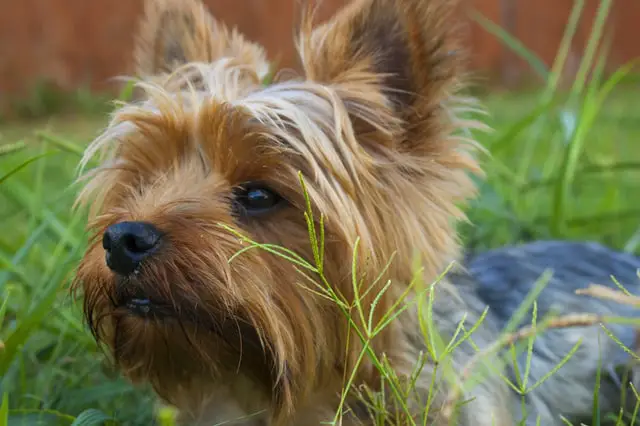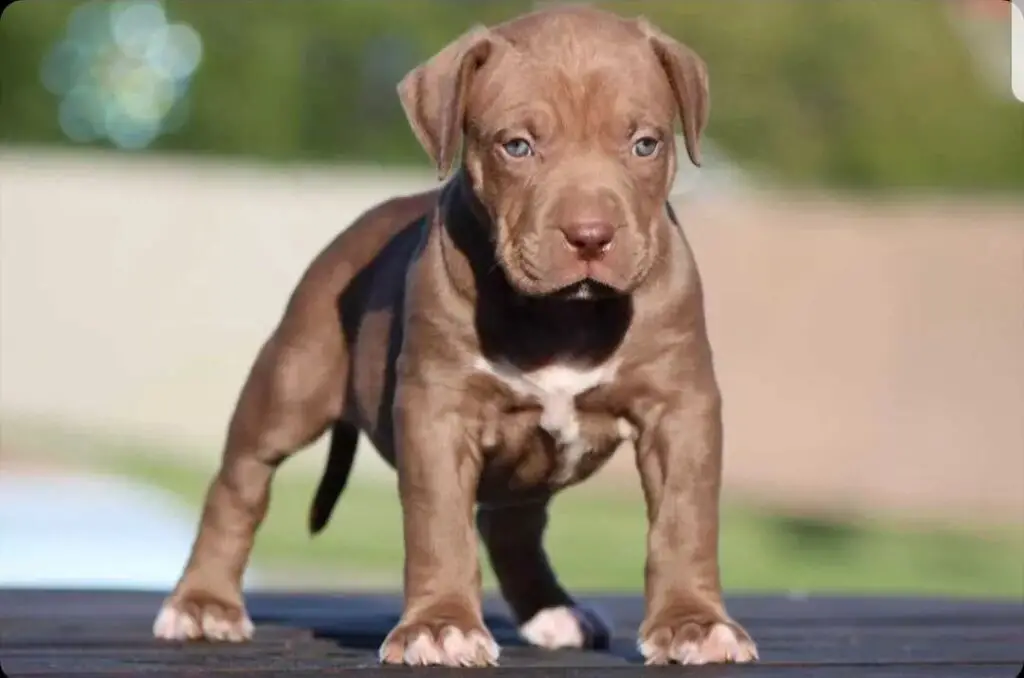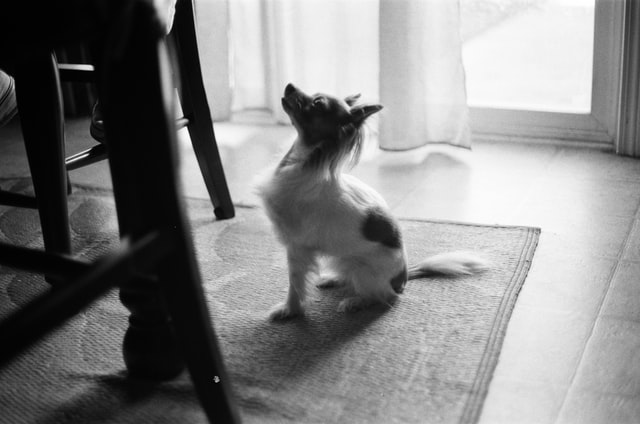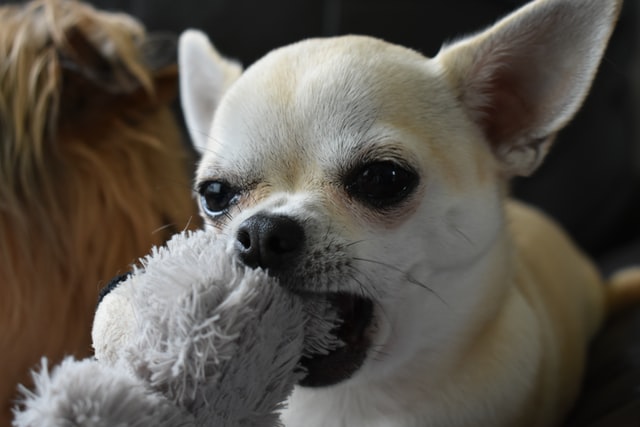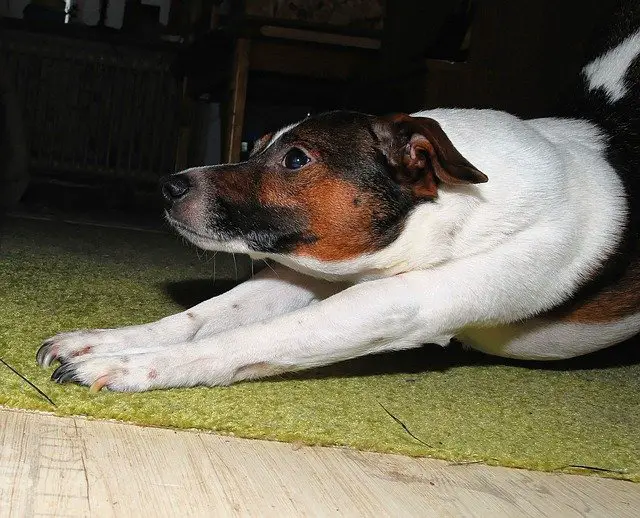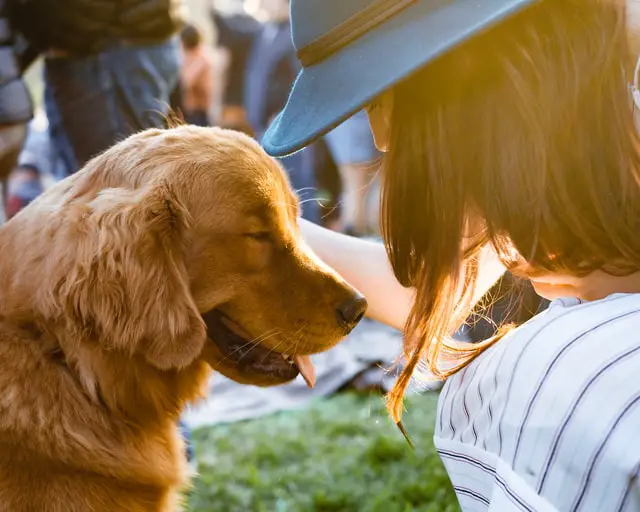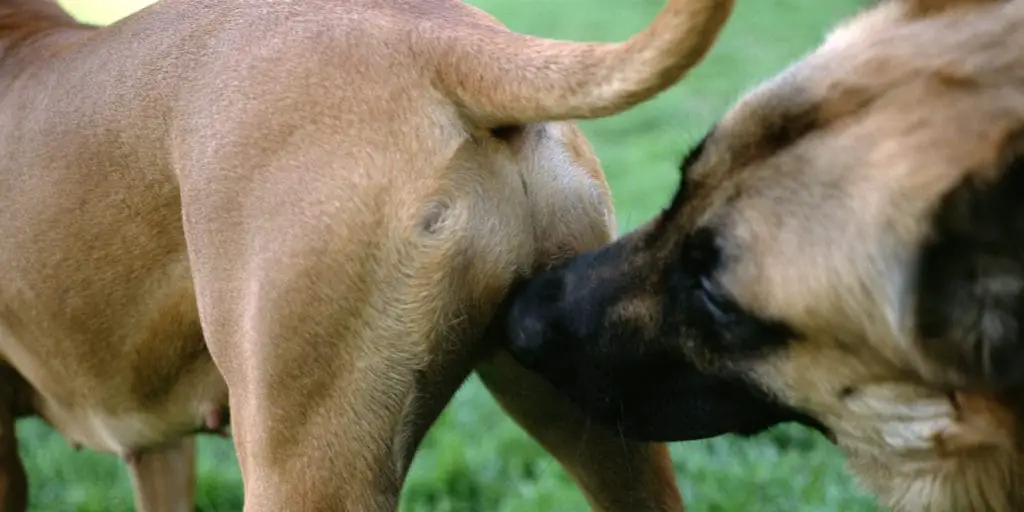Did you know your dogs often show some common behaviors? However, some are pretty easy to understand, while others are more complicated to analyze. Thus, if you want to interpret your furry friends and create a good bond with them, you should commence by understanding what these common behaviors are and what they mean.
This blog post is about understanding common and some unique dog behaviors explained in detail. So, without any further ado, let’s dive straight into the topic!
- 35 Common Dog Behaviors And Their Meanings
- 1. Showing Off Teeth
- 2. Licking Lips
- 3. Panting Heavily
- 4. Excessive Barking
- 5. Growling
- 6. Whining
- 7. Howling
- 8. Flicking Of Ears
- 9. Sniffing Out Things
- 10. Licking Genitals
- 11. Chasing Their Tail
- 12. Wagging Of Tail
- 13. Crouching
- 14. Digging
- 15. Humping/Mounting
- 16. Nodding Their Head
- 17. Shaking Their Head
- 18. Having Hackles/Goosebumps
- 19. Revealing Their Belly
- 20. Leaning Their Head To One Side
- 21. Yawning
- 22. Raising Their Paws
- 23. Raising Their Eyebrows
- 24. Showing Hunched Posture
- 25. Showing Arching Back
- 26. Trembling
- 27. Stiff Walking
- 28. Bowing
- 29. Showing Aggression
- 30. Jumping Up
- 31. Begging
- 32. Chewing
- 33. Stretching
- 34. Showing Empathy
- 35. Butt Sniffing
- Understanding Dog Behaviors Is Easy
35 Common Dog Behaviors And Their Meanings
A dog’s behavior and signs tell about their mood and emotions. Although they cannot communicate directly, they display a range of signals to talk with you and other pets. So, we’ve curated 35 of their commonly used behaviors that you can understand to interpret their body language. And, here we go:
1. Showing Off Teeth
Perhaps, this is one of the dogs’ most common behaviors, which may scare anyone. Dogs show their teeth quite often to prove their dominance and superiority. You must keep a proper distance when your canine shows its teeth. This behavior is observed chiefly in adult dogs, and there are various reasons behind this body language. Sometimes, this teeth showing can often lead to accidental biting or barking, so it’s advisable to not go near any dog showing this behavior.
2. Licking Lips
A doggie licks their lips if they are worried or anxious. Many a times, this behavior can also say that your four-legged friend is sexually active. This behavior is mostly seen in growing pups as the love to bite or lick their lips. In case, you’re also seeing your dog, licking the lips of other pets, it can be a sign that they’re open for friendship.
Related: Why Do Dogs Lick Their Paws?
3. Panting Heavily
How often do you see your beloved dog panting heavily? The reasons can vary breed per breed. Dogs usually pant when they get tired or overheating due to fast activities like running, swimming, etc. Panting helps the dog to cool its body. However, some dogs do panting to get relief from stress and anxiety.
4. Excessive Barking
Barking is the natural behavior and trait of dogs. No one can stop them from barking as it helps them to communicate. However, owners get frustrated when this communication signal turns out in excessive barking behavior.
Dogs usually bark out loud to show aggression or realize any nearby threat. On the other hand, a soft bark indicates that your dog is friendly and in a mood to play. To get rid of excessive barking behavior in dogs, you should try the proper training methods.
Related: How To Stop Dog Barking?
5. Growling
Many dog owners confuse growling with barking. While barking is something they do to communicate, growling is something different. When dogs generate a loud growling sound, they’re defensive and terrified, which might end up attacking. In comparison, a lower growling sound means that dogs are worried, cautious, and want their time alone.
6. Whining
Whining is again a form of vocal communication exhibited by dogs. Dogs show whining behavior when they want attention or are curious about something. If your dog also whines, there could be any of the below reasons:
- Too much excitement
- Seeking attention
- Desiring rewards/treats
- Showing signs of separation anxiety
- Any underlying medical problems
7. Howling
Dogs usually howl when they’re feeling alone or left out. They howl to show their presence to other dogs or humans. If they’re howling very lightly, this means they’re fascinated and satisfied with their current situation. If your dog feels alone in the room, you might see them producing a long howling sound. And after all, howling is a way to help them communicate with other creatures of the world.
8. Flicking Of Ears
Just like humans keep their ears attentive while listening to something important, dogs flick their ears to show that they’re focused and listening to the sounds around them. You might see them flick their ears back and forth, which means they’re trying to listen to pretty low noise sounds. If you see your dog flicking their ears, try to understand what kind of sounds they’re hearing.
9. Sniffing Out Things
Sniffing is one of the common behavior of dogs that helps them out to sense things. If you’re observing your dog sniffing the air, it means they’re trying to smell a problem or tracing a target. On the other hand, if your dog is sniffing other dogs, that means they’re open to friendship and discovering their body. Dogs also sniff their food before eating to make sure their food is delightful for them or not.
10. Licking Genitals
You might have seen your dog licking its own genitals and have wondered about this weird behavior. When dogs lick their private areas, they’re just cleaning out their genitals after urinating or pooping, and it should not be a sign of worry for dog owners. However, when they do this quite often, it means they’re struggling with discomfort such as swollen anus, penis discharge, increased urination, etc.
11. Chasing Their Tail
When dogs chase their tail, it seems like they’re acting weird, and this behavior can amuse any person. When dogs are chasing their tail, they’re just playing and having fun most of the time. However, when they do this more often and excessively, it can be due to compulsive behavior. Compulsive behavior in dogs can be due to underlying medical problems and should be consulted with a vet.
12. Wagging Of Tail
Dogs wag their tail to communicate with humans or other dog breeds. When a dog wags their tail, they look adorable and attractive. If a dog wags their tail high in the air, it means they’re confident about the situation and ready to dominate. In comparison, if they’re curling their tail down and below their legs, that means they’re worried and anxious about the situation. Tail wagging is also considered an essential body language of dogs.
Related: Why Do Dogs Have Tails?
13. Crouching
Crouching in dogs may be due to fear and anxiety. Young puppies usually do more crouching when they see bigger dogs coming their way. They think by crouching, they’re safe from the situation. To make your puppy more confident and dominating, it’s essential to socialize them from a young age.
Related: 5 Easy Ways To Socialize Your Puppy
14. Digging
Well, if a dog doesn’t dig, then they’re indeed lacking the common doggy behaviors. Dogs usually dig to bury or discover things. If you see your dog digging out the ground, you should not worry about them. Some dogs have a habit of digging after pooping or peeing. Also, dogs dig to carve out resting space for your newborn puppies.
15. Humping/Mounting
Humping and mounting are other common behaviors of dogs that help understand their body language. If a dog is mounting gently, it means they’re seeing compassion and demanding treats from you. And, if a dog humps strongly, it means they’re showing signs of superiority and dominance in the presence of other dogs.
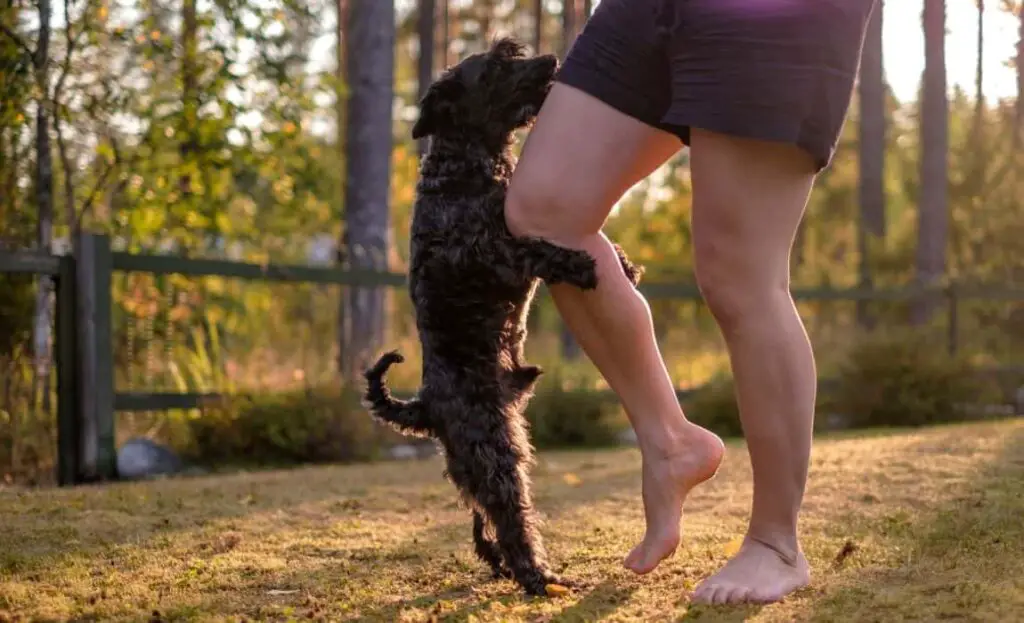
16. Nodding Their Head
A pup nods his head when he feels relaxed with no signs of anxiety and stress. Sometimes, it also means they’re eagerly lingering for any desire or need. As a dog owner, seeing your doggie nodding his head should not be a sign of much worry.
17. Shaking Their Head
When dogs shake their head, it’s a common behavior shown by them. Dogs shake their head to relieve stress, itching, or irritation; it also helps them clear any dirt or water from their ears. However, if your dog is shaking their head too often, it can be due to medical problems such as ear infection, irritation, or the presence of ear mites.
Related: How To Clean Dog Ears?
18. Having Hackles/Goosebumps
Just like humans, dogs also show goosebumps, commonly known as hackles in dogs. Your furry friend can show hackles if they show signs of fear, anxiety, and stress. When your sweetheart is in contact with other pets, they can raise their hackles and stand tall to protect themselves in case of an assault from fellow pooches.
19. Revealing Their Belly
When dogs reveal their body or rollover, it’s a sign of submissive behavior in them. Some dogs like to rollover to seek the attention of the humans present near them. So, if your dog is also lying on the ground and revealing its belly, you should not worry and instead give them proper attention.
Related: How To Teach Dogs To Rollover In 5 Minutes?
20. Leaning Their Head To One Side
A dog bends their head when worried about something nosy. They may also express this behavior when waiting for more information or learning something new during their training process. Sometimes, dogs also lean their heads to one side when they’re listening to lower sound noises in the rooms.
21. Yawning
Yawning is another form of a dog’s communication and body language. They yawn just like humans, with their mouth wide open and deep breaths. When a dog yawns, it may signify that they’re threatened or feeling anxious but not in the mood to attack. Or, in simpler terms, dogs show this behavior to avoid any conflict.
22. Raising Their Paws
When dogs raise their paws, it means they’re in a good mood and wants to play with you. Also, when they raise their single leg, it shows that they’re very curious and excited about the situation and love to have you. This behavior is mostly seen in younger dogs as they’re more prone to excitement.
23. Raising Their Eyebrows
When dogs make clear and focused eye contact with humans, it signifies that they’re trying to communicate. When your dog raises their eyebrows, it simply means they’re trying to say something to you. Some dogs show signs of happiness from their eyebrows movement, and some breeds show signs of sadness with the same eye moves.
24. Showing Hunched Posture
A hunching posture is a sign of varying emotional states in dogs. A hunched back signifies that a dog struggles with medical problems such as kidney failure, stomach problems, or bladder issues. You can easily see the pain by seeing your dog in a hunching posture, so you must look out for support to help them.
25. Showing Arching Back
Whenever a dog arches their back, there’s a strong possibility that they’re struggling with pain and discomfort. The pain can be in the gut, anal, stomach, or back spine. To treat your dog’s arching back, you first need to consult with your vet. The veterinarian will diagnose the condition and seek possible treatment options.
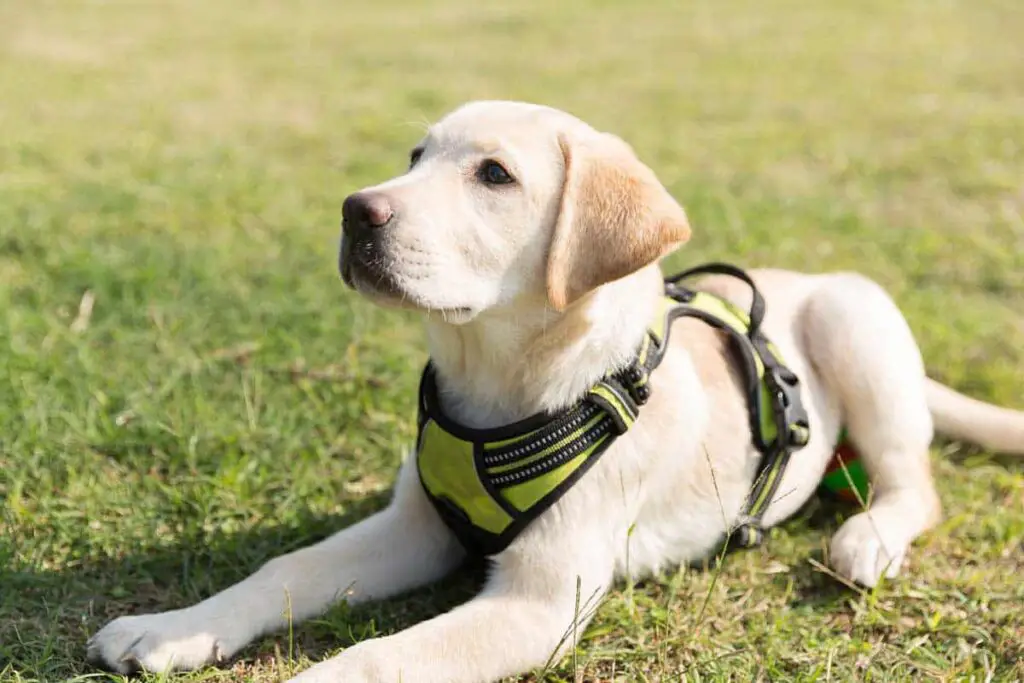
26. Trembling
Often, dogs start shaking their body while standing, which is a sign of trembling. This shaking can be in the entire body or some parts like the tail, back, or legs. And the reasons can be due to fear, anxiety, underlying pain, muscle weakness, etc. Sometimes dogs also tremble due to colder temperatures, which is often known as shivering in dogs.
27. Stiff Walking
Stiff walking posture is majorly seen in the senior dogs. Stiff walking means when a dog moves their one leg slowly than the others, which can be easily seen while observing them. This could be because of underlying pain and discomfort. In case of a broken leg, you should consult with your vet and provide comfortable support to help your dog walk without any pain.
28. Bowing
A canine salute by lowering their chest and head to the floor while holding the rear body up. If your pet bows, that simply means they want to play with you. Some dogs twirl their hips and swish their tails to show the desire to play. So, if you’re learning about dog body signs, look out when your dog is bowing and make their day cheerful with some dog games.
29. Showing Aggression
Well, no one wants their dog to show aggression; however, some dog breeds such as Doberman, Pitbull, German Shepherd, etc., are naturally aggressive. Dogs show aggression by showing their teeth with wide jaw open, lunging, and biting out things. It’s important to understand that all dogs can show aggressive behavior depending on their situation.
Some breeds want to prove their dominance by showing the charge, which might lead to an attack. In comparison, some breeds show aggression just to seek your attention. To combat destructive behavior in your dogs, we advise you to work on their positive reinforcement training.
30. Jumping Up
Jumping is another natural and common behavior of pets, and dogs love to jump. Most of the dogs do jumping just to greet people. Sometimes, they also start jumping out of their excitement and curiosity. Some owners feel dog jumping is dangerous and annoying, but it’s not the case. You can efficiently train your dog not to jump on every occasion.
Related: How To Stop A Dog From Jumping On Guests?
31. Begging
Dogs beg whenever they desire something to eat. Begging is bad behavior, but some dog owners encourage these habits in their pets. The reason, they want their pets to ask first instead of snatching things. This encouragement can often lead to obesity in dogs and other stomach problems. So, if you’re also the one who teaches your canine to beg, you should stop doing it.
32. Chewing
Chewing is another natural behavior of dogs. It’s an important activity of a dog’s lifestyle and should not be a sign of worry for dog owners. However, if a dog chews things excessively, it could be a sign of destructive behavior and be eliminated. Here are some of the possible reasons why do dogs chew things:
- Due to boredom and anxiety
- Due to curiosity
- Due to stomach problems
- Due to hungriness
- Due to teething (in younger pups)
33. Stretching
Almost every dog breed stretches their body, and it’s a great way to understand their behavior and mood. They do this to show a lovely attitude and signs of playfulness. So, if your dog often stretches in a day, it displays their happier mood, and they’re ready to play. Some of the dog breeds are lazy by nature and can also exhibits this stretching behavior.
34. Showing Empathy
Do you know that dogs also have emotional feelings, which they indicate by showing empathy? Dogs can realize when someone close to them is upset or not feeling well. Your dog might lick you or rest his head on your shoulders to provide you the comfort. Just like humans can understand a dog’s body language, dogs can also read the body signs of a human being.
35. Butt Sniffing
From showing empathy behavior to sniffing butts, dogs sometimes do crazy stuff. Just like humans shake their hands to greet someone, dogs have their own methods to meet with other pets, and butt-sniffing is one of those methods. So, whenever your dog is sniffing the butt of another dog, they’re simply greeting them.
Understanding Dog Behaviors Is Easy
If you care for or work with dogs, you should understand their most common behaviors and body language. Some behaviors are normal, which implies that you can do little to improve them. Whenever a dog shows any unique posture or common postures as listed above, you just have to respond correctly. If your dog shows any troublesome behaviors, you can train them to improve their manners.
We hope you enjoyed reading this guide on common dog behaviors and their meaning. Let us know in the comments section, how do you understand your dog acts.
Related: 7 Incredible Ways To Improve A Dog’s Behavior
Pin It:
